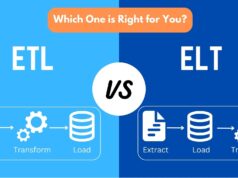In today’s digital age, effective IT budgeting is crucial for businesses of all sizes. It not only helps in optimizing operations but also ensures cost-effectiveness. By carefully planning and managing IT expenses, organizations can make strategic investments, improve efficiency, and stay ahead of the competition. In this blog post, we will delve into the key aspects of IT budgeting and provide valuable insights on how to plan your IT expenses and save money.
Importance of IT Budgeting for Cost-Effective Operations

IT budgeting plays a vital role in achieving cost-effective operations. It provides a clear roadmap for allocating financial resources to support IT initiatives and infrastructure. By setting a budget, businesses can control costs, prevent overspending, and minimize financial risks. A well-planned IT budget also enables organizations to prioritize their investments, identify potential areas for cost savings, and ensure that expenses align with the overall strategic goals of the company.
Assessing Current IT Infrastructure and Identifying Areas for Improvement
Before creating an IT budget, it is essential to assess the current infrastructure thoroughly. This assessment, often carried out in collaboration with IT consulting firms, helps in identifying areas that require improvement or modernization. By leveraging the expertise of these firms and evaluating hardware, software, and networking systems, organizations can pinpoint inefficiencies or outdated technologies that may be draining resources. This comprehensive analysis also enables businesses to identify potential cost-saving opportunities, such as consolidating servers, optimizing data storage, or implementing energy-efficient solutions. The insights provided by IT consulting firms can significantly contribute to a more accurate and effective budget, tailored to the specific needs and goals of the organization.
Determining Strategic IT Goals and Aligning Them with Budget
Strategic goals are the foundation for effective budgeting. Organizations need to define their long-term objectives and align them with their budgetary plans. This alignment ensures that investments are in line with the company’s strategic vision and business needs. For example, if a business aims to enhance customer experience through digital channels, allocating resources for website development or customer relationship management (CRM) systems becomes a priority.
Prioritizing IT Projects Based on Their Impact and Value

Not all projects are equal in terms of impact and value. To make the most of limited resources, businesses must prioritize projects based on their potential benefits and alignment with strategic goals. A thorough cost-benefit analysis should be conducted for each project, considering factors such as return on investment (ROI), potential revenue generation, and impact on productivity.
Evaluating Vendor Contracts and Negotiating Better Terms
Vendor contracts and agreements have a significant impact on expenses. It is essential to regularly evaluate existing contracts to ensure they are still cost-effective and meet business requirements. By reviewing vendor relationships, organizations can identify opportunities for renegotiation or seek alternative solutions that offer better value for money. Skilled negotiation can result in improved contract terms, reduced costs, or additional benefits. Regularly assessing and optimizing vendor contracts allows businesses to maintain control over their budget and extract the maximum value from their technology investments.
Implementing Cost-Saving Measures through Cloud Computing and Virtualization
Cloud computing and virtualization have revolutionized infrastructure by providing flexible and cost-efficient alternatives to traditional on-premises systems. By migrating to the cloud and virtualizing resources, businesses can reduce hardware and maintenance costs, optimize scalability, and enhance security. Cloud-based solutions offer pay-as-you-go pricing models, allowing organizations to align costs with actual usage. Virtualization enables efficient utilization of server capacity, reducing the need for additional hardware investments.
Tracking IT Expenses and Analyzing Budget Variances Regularly

Effective budgeting requires continuous monitoring and analysis of expenses. Regularly tracking expenses and analyzing budget variances is essential to maintain financial control and identify areas for improvement. By closely monitoring expenditures and comparing them to the funding, organizations can quickly identify any deviations and take corrective actions. This process allows businesses to proactively address cost overruns, identify cost-saving opportunities, and optimize resource allocation. Additionally, analyzing budget variances helps in making informed decisions for future budgeting cycles, as it provides insights into the accuracy of cost estimations and enables adjustments to be made based on actual spending patterns.
Investing in Employee Training to Optimize IT Resource Utilization
Employee training is a valuable investment that can optimize resource utilization and reduce expenses in the long run. Well-trained staff can efficiently manage and maintain IT systems, resulting in improved productivity and reduced downtime. By providing employees with the necessary skills and knowledge, organizations can minimize reliance on external support, saving costs associated with outsourcing or hiring additional personnel. Training programs can focus on areas such as cybersecurity, software proficiency, or project management, empowering employees to leverage technology effectively and maximize the return on investments.
Leveraging Open-Source Software and Freeware to Reduce Licensing Costs
Software licensing costs can be a significant portion of an IT allocation. To mitigate this expense, businesses can leverage open-source software and freeware alternatives. Open-source software is developed collaboratively, allowing users to access and modify the source code freely. It offers cost savings in terms of licensing fees while providing flexibility and customization options. Freeware, on the other hand, refers to software that is available at no cost to the user.
Building a Contingency Fund for Unexpected IT Expenses

In the realm of IT, unexpected expenses are not uncommon. Equipment failures, cybersecurity breaches, or urgent software upgrades can lead to unplanned costs. To mitigate the financial impact of such events, it is crucial to establish a contingency fund within the budget. This fund acts as a safety net, ensuring that unexpected expenses can be addressed without disrupting regular operations or exceeding the allocated allotment.
Conclusion
In conclusion, budgeting is a critical aspect of cost-effective operations for businesses in today’s digital landscape. By following the guidelines outlined in this blog post, organizations can successfully plan their expenses and save money. Assessing current infrastructure, aligning strategic goals with the budget, prioritizing high-impact projects, and evaluating vendor contracts are all key steps in optimizing IT spending. Implementing cost-saving measures through cloud computing, virtualization, and leveraging open-source software can further contribute to significant savings. Regularly tracking expenses, investing in employee training, and building a contingency fund are also vital practices for effective budgeting. By adopting these strategies, businesses can achieve financial efficiency, enhance competitiveness, and unlock the full potential of their IT investments.















